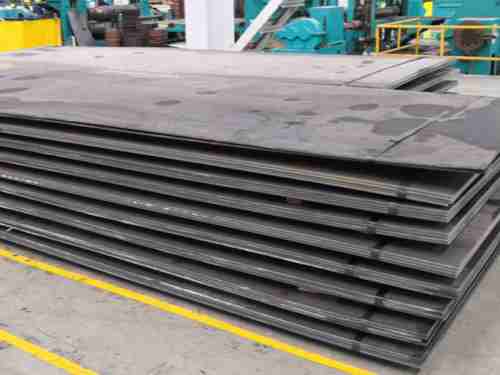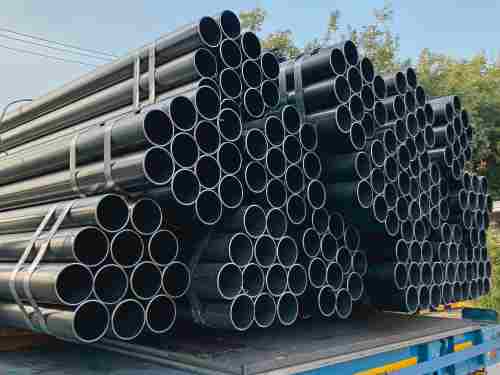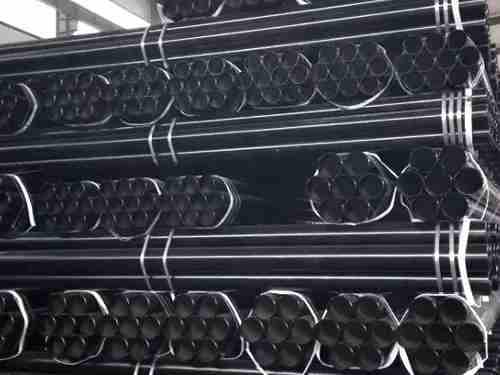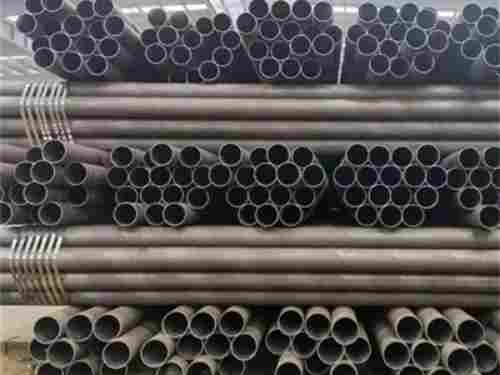Seamless carbon steel pipe, a long steel strip with a hollow cross-section and no seams, plays a crucial role in various industrial sectors. Its unique structure makes it ideal for transporting fluids such as oil, natural gas, coal gas, water, and certain solid materials. Unlike solid steel, such as round bars, seamless carbon steel pipes are lighter in weight while maintaining the same bending and torsional strength. This makes them a highly economical option for industries requiring high-performance steel sections. Due to this, they are extensively used in manufacturing structural components and mechanical parts, including oil drill pipes, automobile drive shafts, bicycle frames, and steel scaffolding in construction. The use of steel pipes for making annular parts improves material utilization, simplifies the manufacturing process, and reduces material waste and processing time. For instance, components like rolling bearing rings and jack sleeves are now commonly made from steel pipes.
Corrosion-Prone Properties: The "Weakness" of Seamless Carbon Steel Pipes
Despite their many advantages, seamless carbon steel pipes do have a notable weakness: their susceptibility to corrosion. The primary materials in carbon steel—iron and carbon—are vulnerable to corrosion when exposed to oxygen and moisture. In humid air, iron reacts electrochemically with oxygen and water to form rust, primarily composed of iron oxide. In corrosive environments like acids and alkalis, the corrosion rate of seamless carbon steel pipes accelerates.
Once corrosion sets in, the structural integrity of the pipes is compromised. The strength of the pipeline diminishes, reducing its ability to withstand pressure and load, which poses significant safety risks. For example, when transporting flammable and explosive substances like oil and natural gas, pipe corrosion can lead to leaks, resulting in potentially catastrophic accidents, such as fires or explosions. Additionally, corrosion roughens the inner surface of the pipe, which increases fluid flow resistance, reduces transportation efficiency, and leads to energy loss. Therefore, effective corrosion protection is critical to maintaining the safety, efficiency, and longevity of seamless carbon steel pipes.
Anti-Corrosion Methods: Extending the Life of Seamless Carbon Steel Pipes
To ensure the long-term performance of seamless carbon steel pipes and protect them from corrosion, various anti-corrosion methods are employed. Common techniques include spraying anti-corrosion paint, hot-dip galvanizing, and epoxy resin coating.
- Spraying Anti-Corrosion Paint
This method involves evenly spraying a layer of anti-corrosion paint over the surface of the steel pipe, forming a protective film that prevents direct contact between the steel and oxygen, moisture, or other corrosive agents.
Advantages:
Simple and cost-effective.
Different types of paints, such as epoxy or polyurethane coatings, can be selected based on the specific environmental requirements.
Suitable for general use with varying environmental conditions.
- Hot-Dip Galvanizing
In this process, the seamless carbon steel pipe is immersed in molten zinc to create a zinc-iron alloy layer on the surface. This sacrificial layer protects the steel by reacting preferentially with corrosive elements, thus preventing further damage to the pipe.
Advantages:
Provides a robust, durable protective layer.
Highly effective against corrosion in various environments, including industrial, marine, and atmospheric settings.
Widely used in construction, bridges, and power transmission.
- Epoxy Resin Coating
Epoxy resin coating involves applying a layer of epoxy resin on both the inner and outer surfaces of the steel pipe. Epoxy is known for its excellent corrosion resistance, oxidation resistance, and low friction.
Advantages:
Forms a solid, protective barrier against external corrosive sources.
Ideal for environments with high demands for corrosion resistance, such as oil and gas pipelines, chemical transport, and water treatment systems.
Highly resistant to wear and tear, making it suitable for demanding industrial applications.
Enhancing the Longevity of Seamless Carbon Steel Pipes
In conclusion, corrosion protection is essential to extend the life of seamless carbon steel pipes, given their inherent vulnerability to corrosion. The choice of anti-corrosion method should be tailored to the specific environmental conditions and operational requirements of the pipes.
- Spraying anti-corrosion paint is cost-effective and easy to apply.
- Hot-dip galvanizing offers robust protection and is suitable for a wide range of environments.
- Epoxy resin coatings provide superior protection in highly corrosive settings.
By selecting the appropriate anti-corrosion technique, seamless carbon steel pipes can achieve longer service lives, reduced maintenance costs, and enhanced safety, continuing to serve crucial industrial functions efficiently and reliably.

 English
English Español
Español











